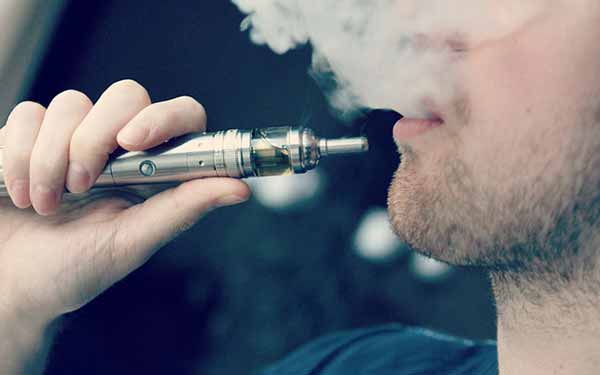E-Cigarette Vapor Boosts Superbugs and Dampens Immune System
In lab and mouse experiments, exposure promotes bacterial virulence and inflammation, while blocking the body’s ability to fight infection
Published Date
By:
- Heather Buschman, PhD
Share This:
Article Content
Researchers at the University of California, San Diego School of Medicine and Veterans Affairs San Diego Healthcare System report data suggesting that e-cigarettes are toxic to human airway cells, suppress immune defenses and alter inflammation, while at the same time boosting bacterial virulence. The mouse study is published January 25 by the Journal of Molecular Medicine.

Vapors from e-cigarettes promote bacterial growth and inflammation, inhibit body’s ability to fight infection. Photo by Vaping360
“This study shows that e-cigarette vapor is not benign — at high doses it can directly kill lung cells, which is frightening,” said senior author Laura E. Crotty Alexander, MD, staff physician at the Veterans Affairs San Diego Healthcare System and assistant clinical professor at UC San Diego School of Medicine. “We already knew that inhaling heated chemicals, including the e-liquid ingredients nicotine and propylene glycol, couldn't possibly be good for you. This work confirms that inhalation of e-cigarette vapor daily leads to changes in the inflammatory milieu inside the airways.”
Crotty Alexander reported the preliminary results of this work at the American Thoracic Society annual meetings in 2014 and 2015. But now her team has also seen their findings hold up in mice. Inflammatory markers — signs of full-body inflammation — in the airways and blood of mice that inhaled e-cigarette vapors for one hour a day, five days a week, for four weeks were elevated by 10 percent compared to unexposed mice.
“We don't know specifically which lung and systemic diseases will be caused by the inflammatory changes induced by e-cigarette vapor inhalation, but based on clinical reports of acute toxicities and what we have found in the lab, we believe that they will cause disease in the end,” Crotty Alexander said. “Some of the changes we have found in mice are also found in the airways and blood of conventional cigarette smokers, while others are found in humans with cancer or inflammatory lung diseases.”
Conversely, bacterial pathogens exposed to e-cigarette vapor benefited. Specifically, Staphylococcus aureus bacteria were better able to form biofilms, adhere to and invade airway cells and resist human antimicrobial peptides after exposure to e-cigarette vapor.
E-cigarette vapor extract-exposed bacteria were also more virulent in a mouse model of pneumonia. All mice infected with normal methicillin-resistant S. aureus (MRSA), an antibiotic-resistant “superbug,” survived. Meanwhile, 25 percent of mice infected with MRSA pre-exposed to e-cigarette vapor died.
The results were consistent with e-liquids from seven different manufacturers, demonstrating that the findings are not limited to one formula or brand.
Crotty Alexander and team also recently reported that MRSA bacteria exposed to conventional cigarette smoke are more resistant to killing by the immune system than unexposed bacteria.
Study co-authors include John H. Hwang, Veterans Affairs San Diego Healthcare System and UC San Diego; Matthew Lyes, VA San Diego Healthcare System and Duke University; Katherine Sladewski, Denzil P. Mathew, Alexander Moshensky, VA San Diego Healthcare System; Shymaa Enany, Suez Canal University and VA San Diego Healthcare System; Elisa K. McEachern, VA San Diego Healthcare System and Weill Cornell Medical College; Soumita Das, David T. Pride, Weg M. Ongkeko, UC San Diego; and Sagar Bapat, Salk Institute for Biological Studies.
Share This:
You May Also Like
Stay in the Know
Keep up with all the latest from UC San Diego. Subscribe to the newsletter today.



